Yo, hey there airbrushing enthusiasts! Are you ready to take your skills to the next level? Because today, we’re gonna dive into the wild world of airbrushing on all sorts of surfaces. I personally learned how to airbrush on my friend’s van back in the day, and let me tell you, it was a ride. But don’t worry, I’ve come a long way since then and I’m here to share all my knowledge with you guys. So buckle up, grab a snack and let’s get started!
Here’s the deal, you can airbrush on almost anything! Can you believe it? From cars to skateboards, to t-shirts and even cakes! The possibilities are endless. And I’m not just talking about the regular surfaces like paper or canvas, oh no, we’re talking about weird and wacky things like balloons and eggs. Yeah, you heard that right, eggs. I tried it once, let’s just say it didn’t end well, but hey, live and learn, right?
So, without further ado, here’s the complete list of every surface you can airbrush on:
Complete List Of Airbrushable Surfaces
Before you start airbrushing, it is important to clean the surface. This will help the paint stick better and last longer.
Paper

Airbrushing paper is a great way to add pizzazz to your invitations, cards, and even envelopes.
Pros:
- It is a great way to add some pizzazz to your invitations, cards, and even envelopes.
- The paint will stick better and last longer.
Cons:
- You may need to do some experimentation to get the results you want.
- The paint can smudge if it isn’t completely dry.
Here’s the list of paper items you can airbrush:
- Invitations: birthday parties, weddings, baby showers, graduation party
- Cards: thank you cards, holiday cards, greeting cards
- Envelopes: all types!
- Scrapbooking Paper: any design or color you can imagine!
- Gift Wrap: make your own wrapping paper with airbrushed designs
Canvas
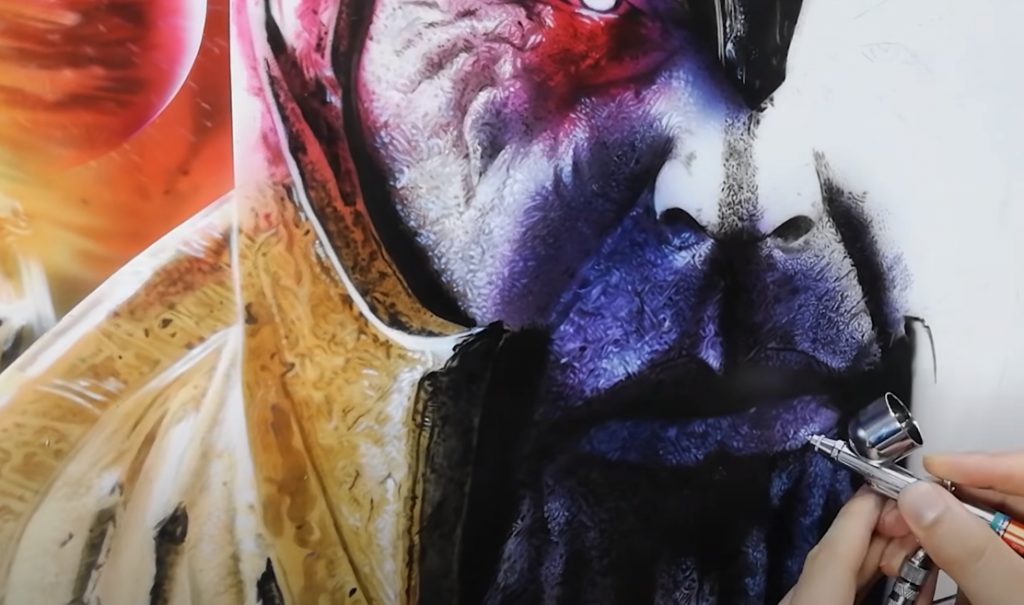
Airbrushing on canvas is a great way to add personality to your home décor.
Pros:
- Canvas is a durable surface that can withstand wear and tear.
- Canvas provides a lot of flexibility when it comes to design options.
- You can airbrush on canvas with a wide variety of prints and colors.
Cons:
- Canvas is a bit more difficult to work with than other surfaces.
- The paint can take a while to dry, which can delay your work process.
Here’s the list of canvases you can airbrush:
- Blank Canvas: a blank canvas is a great surface for airbrushing. You can find them at most craft stores.
- Canvas Board: these are thinner than a traditional canvas and usually come pre-primed, making them ideal for airbrushing.
- Canvas Panels are similar to canvas boards but are usually made of cheaper materials.
- Airbrush Stencils: you can find these at most craft stores or online. They make it easy to create complex designs on your canvas.
Plastic
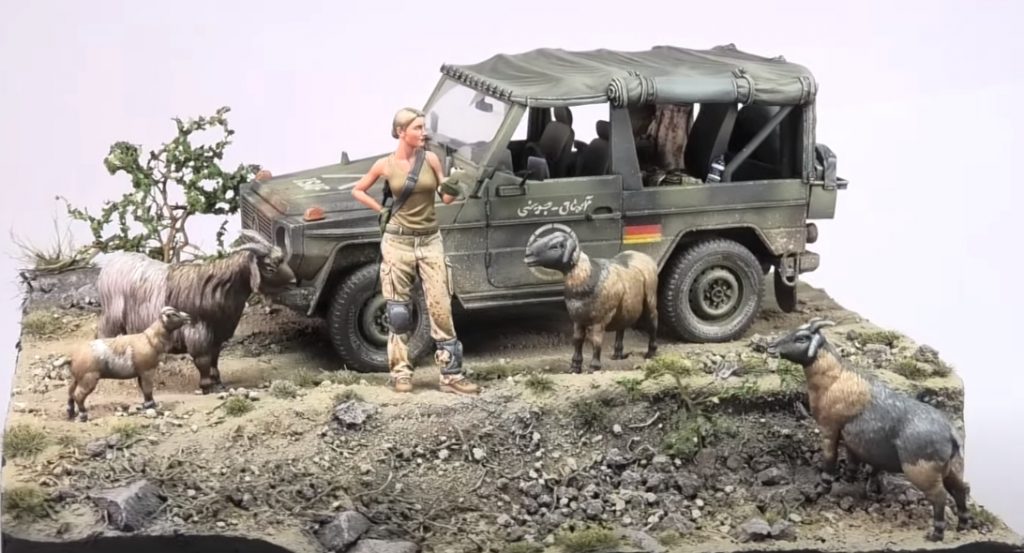
Airbrushing plastic is a great way to add some color to your child’s toys or your own home décor.
Pros:
- It’s a great way to add color to your child’s toys or home décor.
- It’s easy to do and doesn’t require a lot of experience.
- The results are often very vibrant and eye-catching.
Cons:
- The paint can sometimes chip or peel off over time.
- It can be difficult to get a smooth finish on plastic surfaces.
Here’s the list of plastic items you can airbrush:
- Toys: action figures, dolls, cars, trucks
- Home Décor: vases, bowls, picture frames, lamps
- Furniture: chairs, tables, dressers
- Appliances: refrigerators, dishwashers, microwaves
- Electronics: computers, TVs, phones
- Models / Miniatures: model cars, tanks, trains, planes, boats, figures, castles, engines, submarines, dice, grass/trees, and other kits.
Ceramic
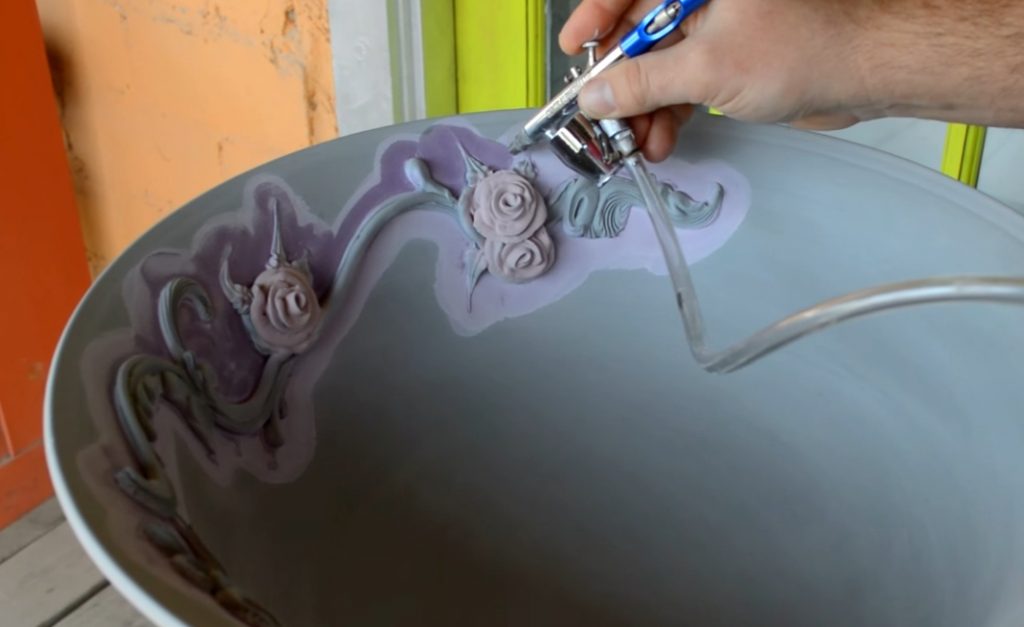
Airbrushing ceramic is a great way to add personality to your home décor. You can choose from various colors and designs to create a look that’s perfect for you.
Pros:
- Ceramic is a durable material that can withstand wear and tear.
- You have a variety of colors and designs to choose from, so you can create a look that’s perfect for you.
- Ceramic is easy to clean.
Cons:
- Ceramic can be expensive.
- The paint can chip or peel if it’s not properly sealed.
Here’s the list of ceramic items you can airbrush:
- Mugs: coffee mugs, tea cups, beer steins
- Plates: dinner plates, salad plates, dessert plates
- Bowls: cereal bowls, soup bowls, fruit bowls
- Vases: small vases, large vases, floor vases
- Posts: flower pots, plant pots, garden pots
Wood

You can airbrush on wood, but you must put down a sealer first. The sealer will stop the wood from absorbing the paint, causing your lines to merge.
Pros:
- You can achieve various looks on wood, from natural to brightly colored.
Cons:
- You need to put down a sealer before you start airbrushing, or the paint will be absorbed by the wood, and your lines will merge.
- The paint can also chip off easily if you’re not careful.
Here’s the list of wood items you can airbrush:
- Furniture: chairs, tables, dressers
- Floors: hardwood floors, laminate floors
- Doors: front doors, back doors, interior doors
- Windows: windowsills, frames, shutters
- Cabinets: kitchen cabinets, bathroom cabinets
- Frames: picture frames, mirror frames
- Wood Models / Miniatures: model cars, trains, planes, boats, figures
Glass
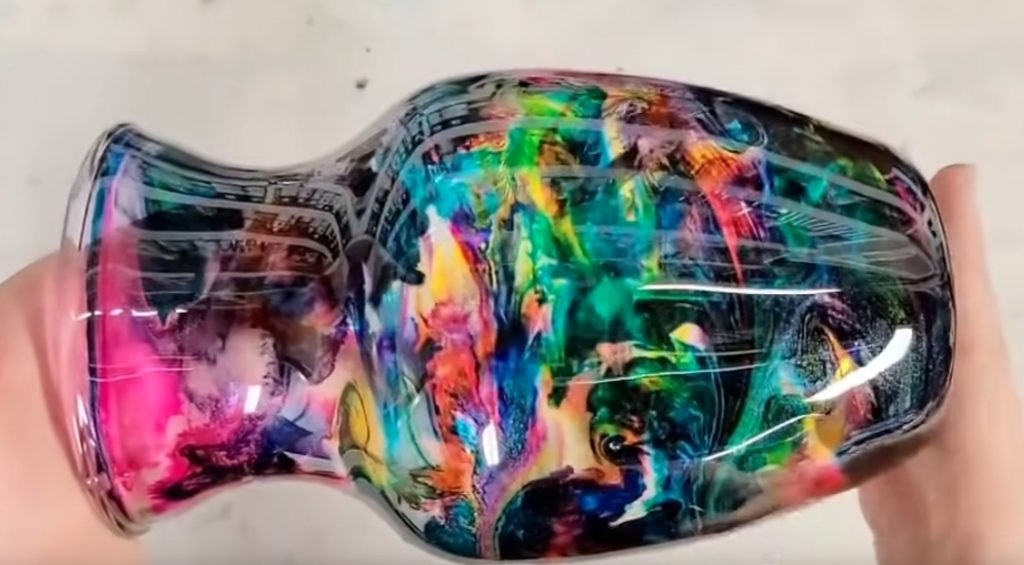
You can airbrush on glass, but you must work in light coats. You should allow plenty of time for the paint to dry between each coat. The best way to achieve good results is to clean the surface thoroughly and not touch it until the painting is finished and dry.
Pros:
- The paint will dry quickly, so you won’t have to wait long before you can use your glass item.
Cons:
- You need to work in light coats, so it will take longer to finish your project.
- You must allow plenty of time for the paint to dry between each coat.
Here’s the list of glass items you can airbrush:
- Windows: windowsills, frames, shutters
- Glass Jars: mason jars, canning jars, baby food jars
- Drinkware: glasses, mugs, cups
- Vases: small vases, large vases
- Dishes: plates, bowls
- Home Décor: picture frames, lamps, vases
Leather
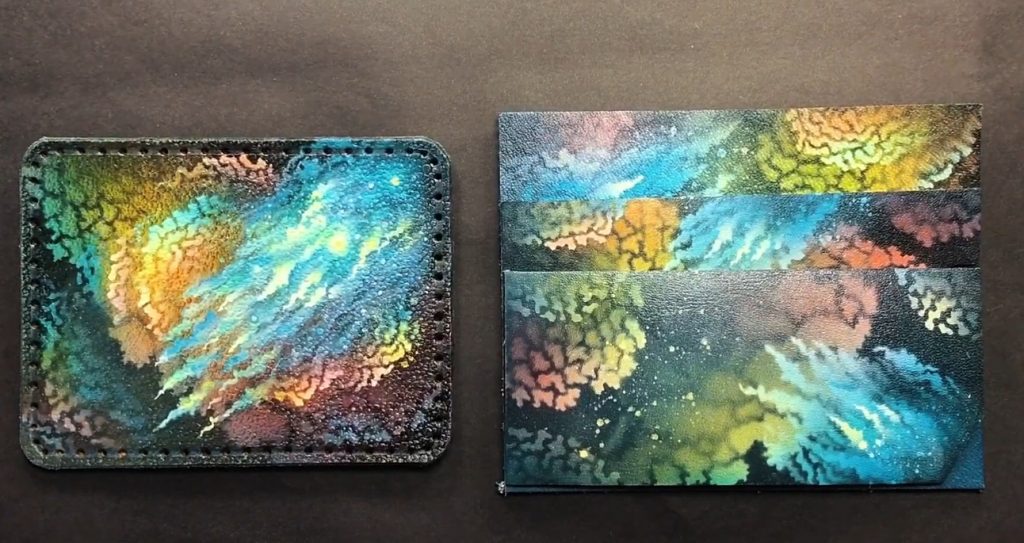
You can use an airbrush to paint on leather. First, use isopropyl alcohol to clean the surface of the leather. You may need to sand it using very fine grit sandpaper if it is dirty or has a lot of wrinkles.
Pros:
- Can add unique designs
- Achieve a smooth and even coverage
- Great for detailed work
Cons:
- Must use a sealer to protect the leather from fading or cracking
- It can be difficult to achieve consistent results
- Paint can bleed if you’re not careful
Here’s the list of leather items you can airbrush:
- Clothing: jackets, pants, shirts, skirts, dresses
- Shoes: sneakers, boots, sandals, flip flops
- Handbags: purses, tote bags, backpacks
- Furniture: chairs, sofas, ottomans
- Car Seats: front seats, back seats
Fabric / Clothing
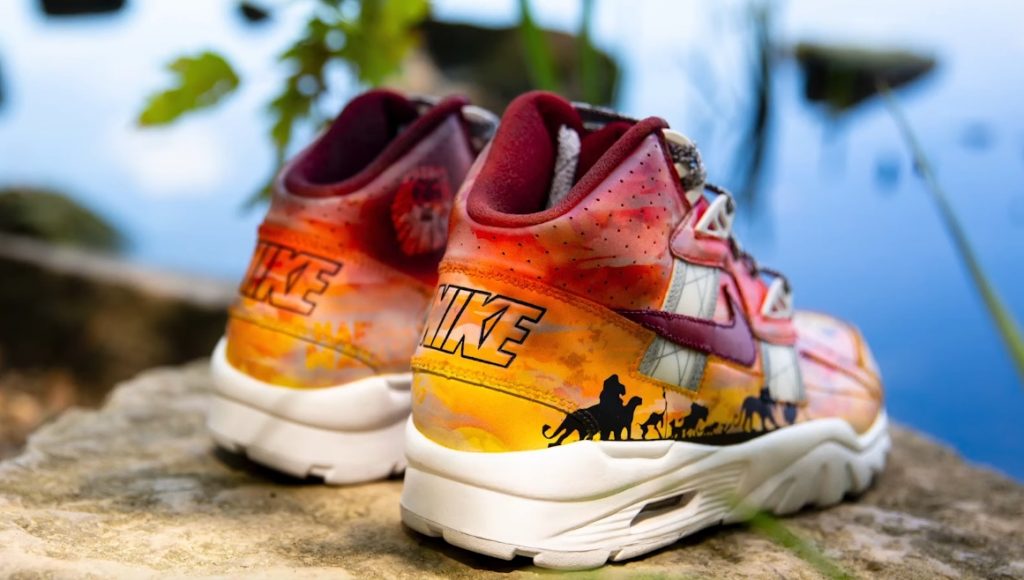
You can airbrush on fabric using thicker paint. You need to use higher air pressure to embed the paint into the clothing. The paint will last longer if you apply heat once you are finished.
Pros:
- The paint will last longer if you apply heat once you are finished.
- You can use thicker paint.
- You will need higher air pressure to embed the paint into the fabric.
Cons:
- The fabric may shrink after you airbrush it.
- The paint may not be permanent.
Here’s the list of fabric items you can airbrush:
- Clothing: shirts, pants, skirts, dresses, jackets
- Linens: bed sheets, pillowcases, towels
- Drapery: curtains, valances
- Upholstery: sofas, chairs, ottomans
- Car Seats: front seats, back seats
Skin
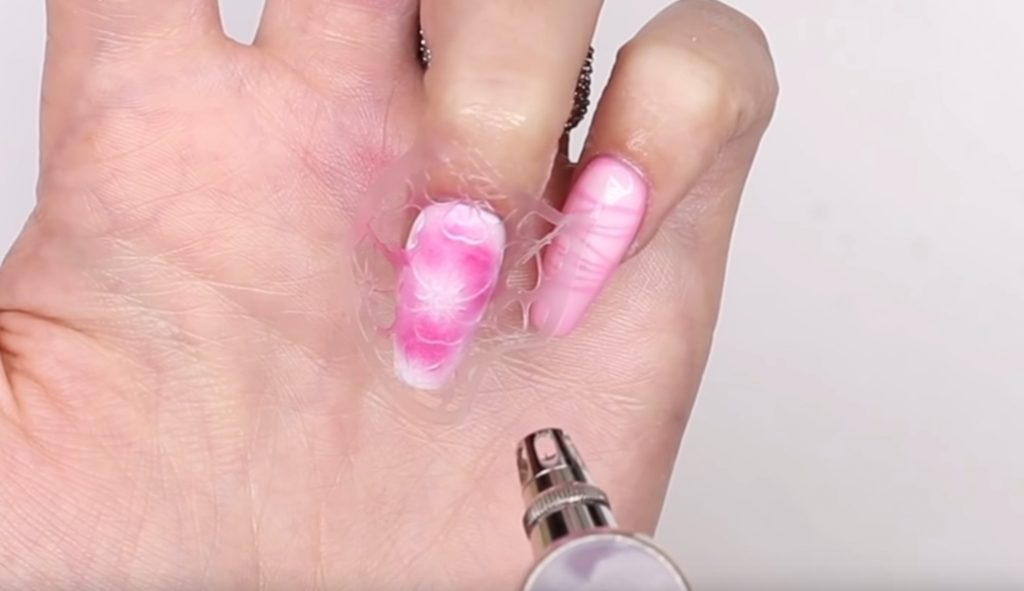
You can use airbrush makeup or body paint on your skin. You must ensure that the makeup or paint is safe on the skin. Never use more than 15psi of air pressure when applying the makeup or paint, as it can be dangerous to the participant.
Pros:
- Airbrush makeup or body paint can give you a flawless complexion.
- It is safe to use on the skin.
- You can achieve various looks with airbrush makeup or body paint.
Cons:
- You must ensure that the makeup or paint is safe on the skin.
- Never use more than 15psi of air pressure when applying the makeup or paint, as it can be dangerous to the participant.
Here’s the list of skin items you can airbrush:
- Makeup: foundation, blush, bronzer, eyeshadow, lipstick
- Body Paint: full body paint, temporary tattoos
- Nails: fingernails, toenails
- Hair: highlights, lowlights, color streaks
Metal
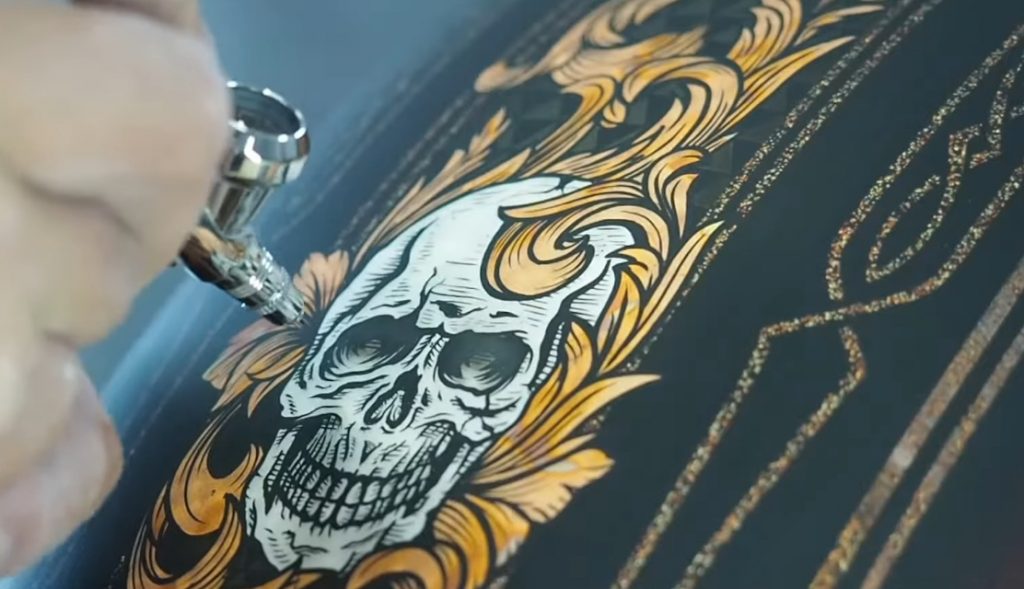
You can airbrush on metal using enamel paint. The key to success is to use a primer first, then apply the paint in thin coats. You should also use a clear coat to protect the paint from scratches and wear.
Pros:
- You can airbrush on a variety of surfaces
- The paint lasts longer when applied to metal
Cons:
- You must use a primer and clear coat for the best results
- The paint can scratch or wear over time without proper protection
Here’s the list of metal items you can airbrush:
- Cars: cars, trucks, SUVs
- Motorcycles: motorcycles, scooters
- Bicycles: bicycles, tricycles
- Furniture: chairs, tables, beds
- Appliances: refrigerators, dishwashers, microwaves
- Tools: power tools, hand tools
Food
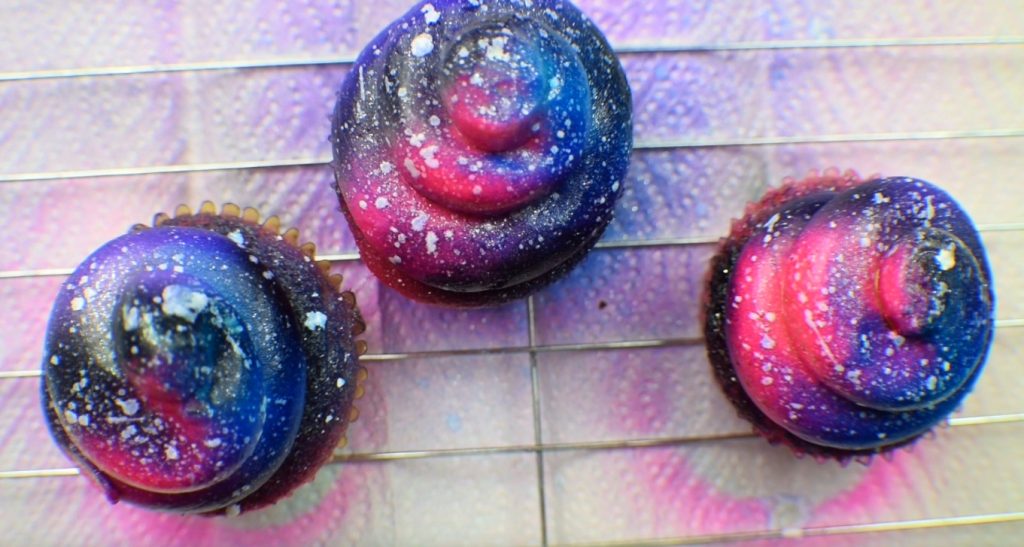
You can airbrush almost any food item. Fruits, vegetables, cakes, candy, and even main dishes can be given new life with an airbrushed design.
Pros:
- You can airbrush almost any food item.
- Fruits, vegetables, cakes, candy, and even main dishes can be given new life with an airbrushed design.
Cons:
- Food may not be safe to airbrush.
- You need to be careful not to get the paint in your mouth.
Here’s the list of food items you can airbrush:
- Fruits: Apples, bananas, oranges, grapes, watermelons, cantaloupes, strawberries
- Vegetables: carrots, celery, tomatoes
- Cakes: birthday cakes, wedding cakes, cupcakes
- Candy: lollipops, chocolate bars
- Main Dishes: pizza, pasta
- Macarons
Cookware
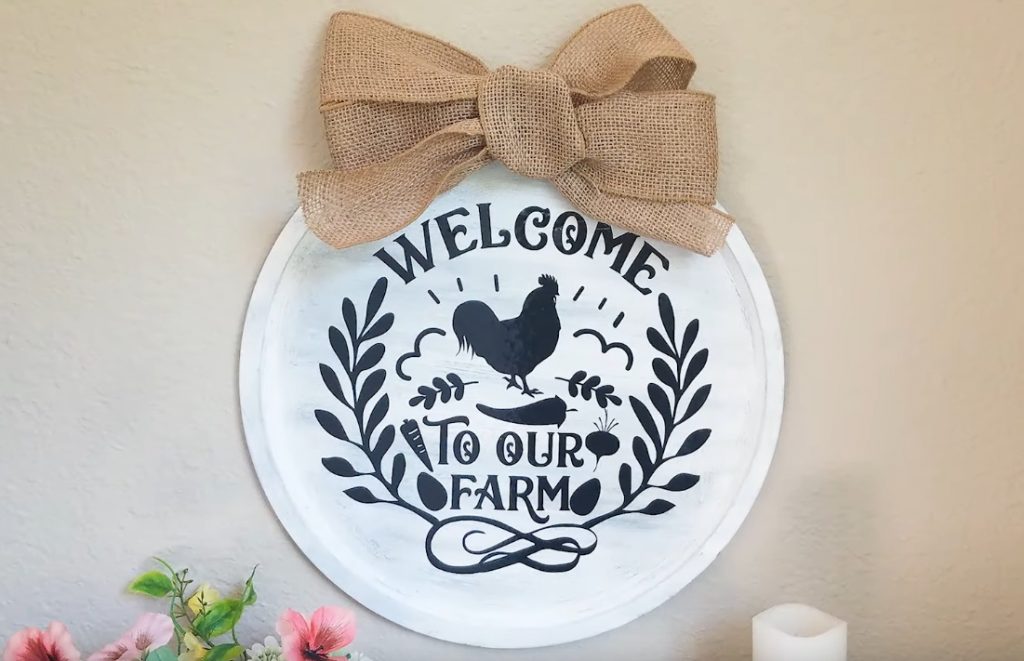
You can airbrush cookware made from aluminum, non-stick, copper, enamel, and stainless steel. You can also personalize your own cooking utensils with this technique!
Pros:
- You can personalize your own cooking utensils with this technique!
- Airbrushing cookware made from aluminum, non-stick, copper, enamel, and stainless steel is possible.
Cons:
- You may need to sand the cookware’s surface if it is dirty or has a lot of wrinkles.
- The paint will last longer if you apply heat once you are finished.
Here are some ideas:
- Aluminum Cookware: frying pans, baking sheets, cake pans
- Non-stick Cookware: pots and pans
- Copper Cookware: kettles, mugs, teapots
- Enamel Cookware: casserole dishes, pie plates
- Stainless Steel Cookware: mixing bowls, cookie cutters
Vinyl Records
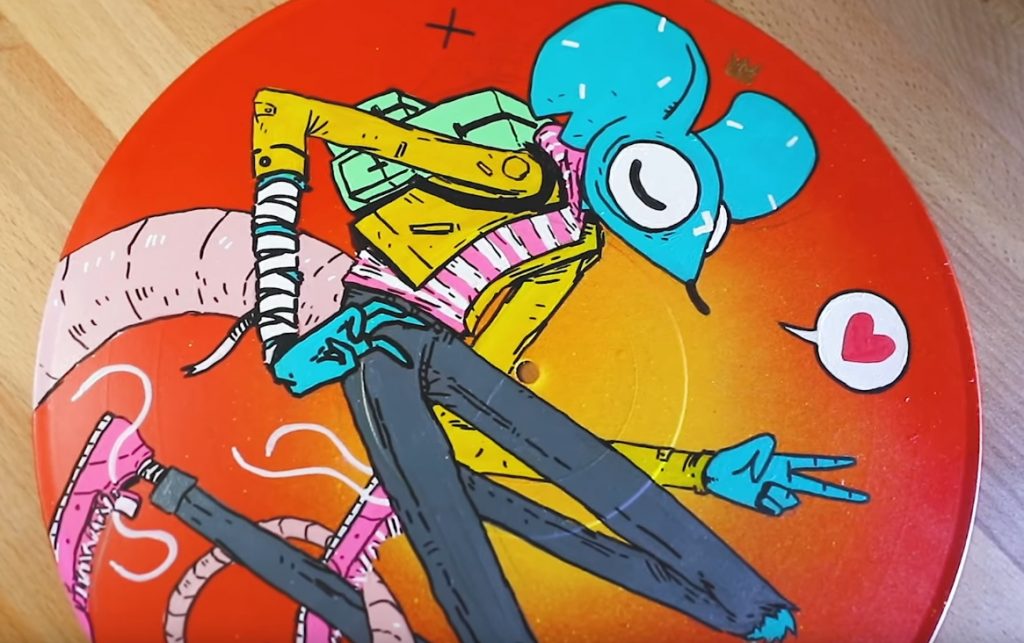
You can airbrush vinyl records to give them a new look. You can also use this technique to repair old or damaged records.
Pros:
- You can give vinyl records a new look with airbrushing.
- You can repair old or damaged vinyl records with airbrushing.
Cons:
- Airbrushing can be time-consuming.
- Airbrushing can be expensive, depending on the materials you use.
Here’s the list of vinyl items you can airbrush:
- Vinyl Records: LPs, EPs, singles
- Vinyl Figures: action figures, Funko Pops!, bobbleheads
- Wall Art: posters, prints
Conclusion
The manifold realms that airbrush artists may ply their trade upon are plentiful and varied. The aforementioned enumeration, albeit exhaustive in its coverage of the most ubiquitous media, barely scratches the surface of the copious other materials that are ripe for creative exploration. Endeavor to assay an assortment of substrates, and ascertain which ones may be most conducive to producing the pinnacle of artistry. Unwavering dedication to repeated attempts shall be rewarded with consummate proficiency, thus, persist in the pursuit of the perfect masterpiece, and push the boundaries of artistic ingenuity with each new undertaking!
FAQ
What are some of the most common surfaces to airbrush?
Various surfaces can be airbrushed, but the most common are canvas, paper, fabric, and wood.
Are there any surfaces you can't airbrush on?
There are no surfaces that you cannot airbrush on. However, some surfaces may be more difficult to airbrush than others depending on the texture and material. For example, a surface with many nooks and crannies may be more difficult to airbrush evenly than a smooth surface.
How do I prepare my surface for airbrushing?
Before you start airbrushing, you’ll need to prepare your surface. This involves cleaning the surface and then priming it with a layer of paint to help the airbrush paint stick to the surface. You can use any type of primer designed for your chosen surface. For example, if you’re airbrushing on wood, you’ll need to use a primer specifically designed for wood.
Hey there! I’m Richard Baker, a miniature painter who’s been in the game for a solid decade now. I’ve been painting miniatures for ten years and I’ve got a ton of tips and tricks to share with you all. My website is a treasure trove of knowledge that I’ve gathered from both my own personal experiences and from reading all sorts of books.


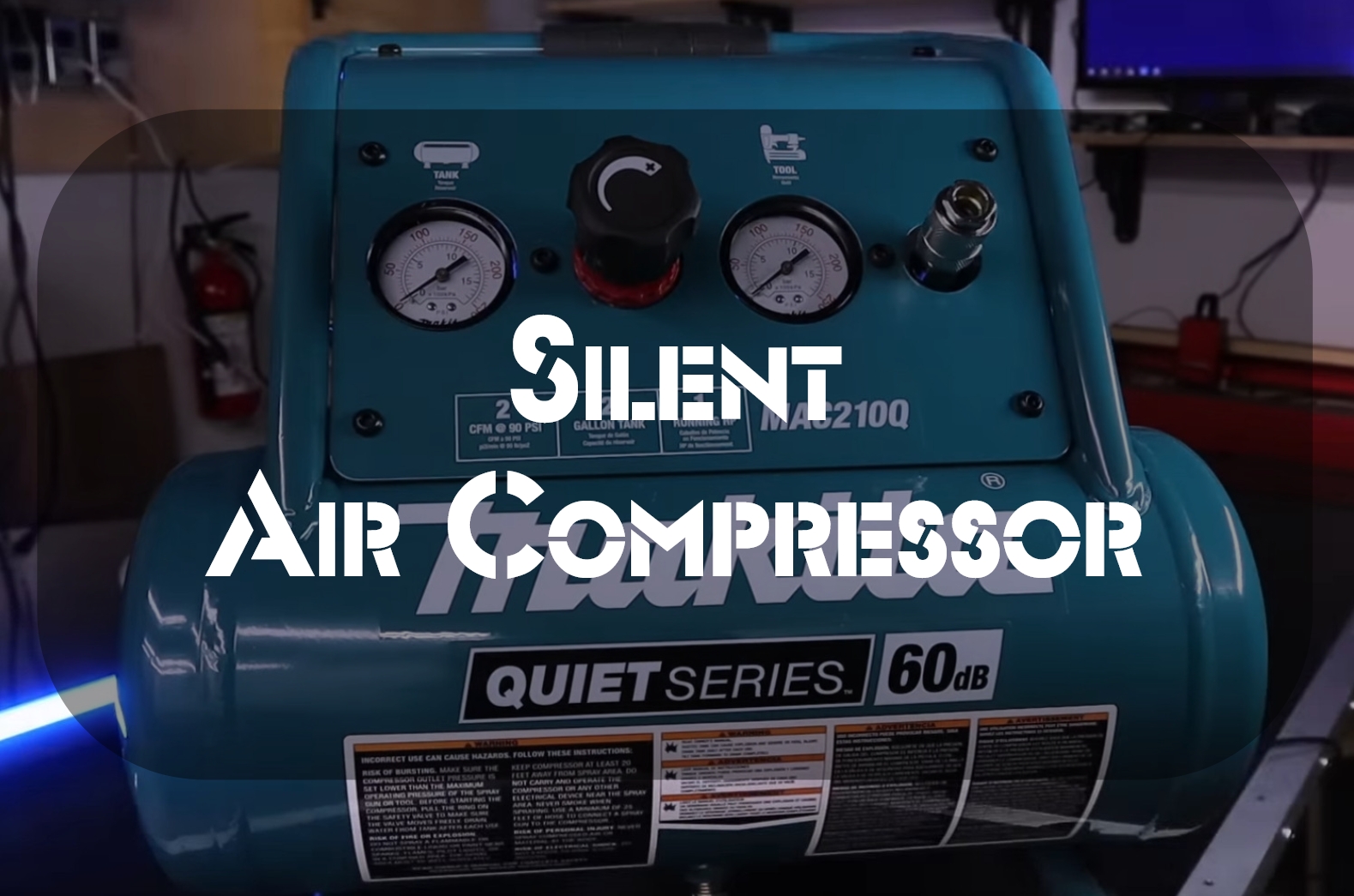
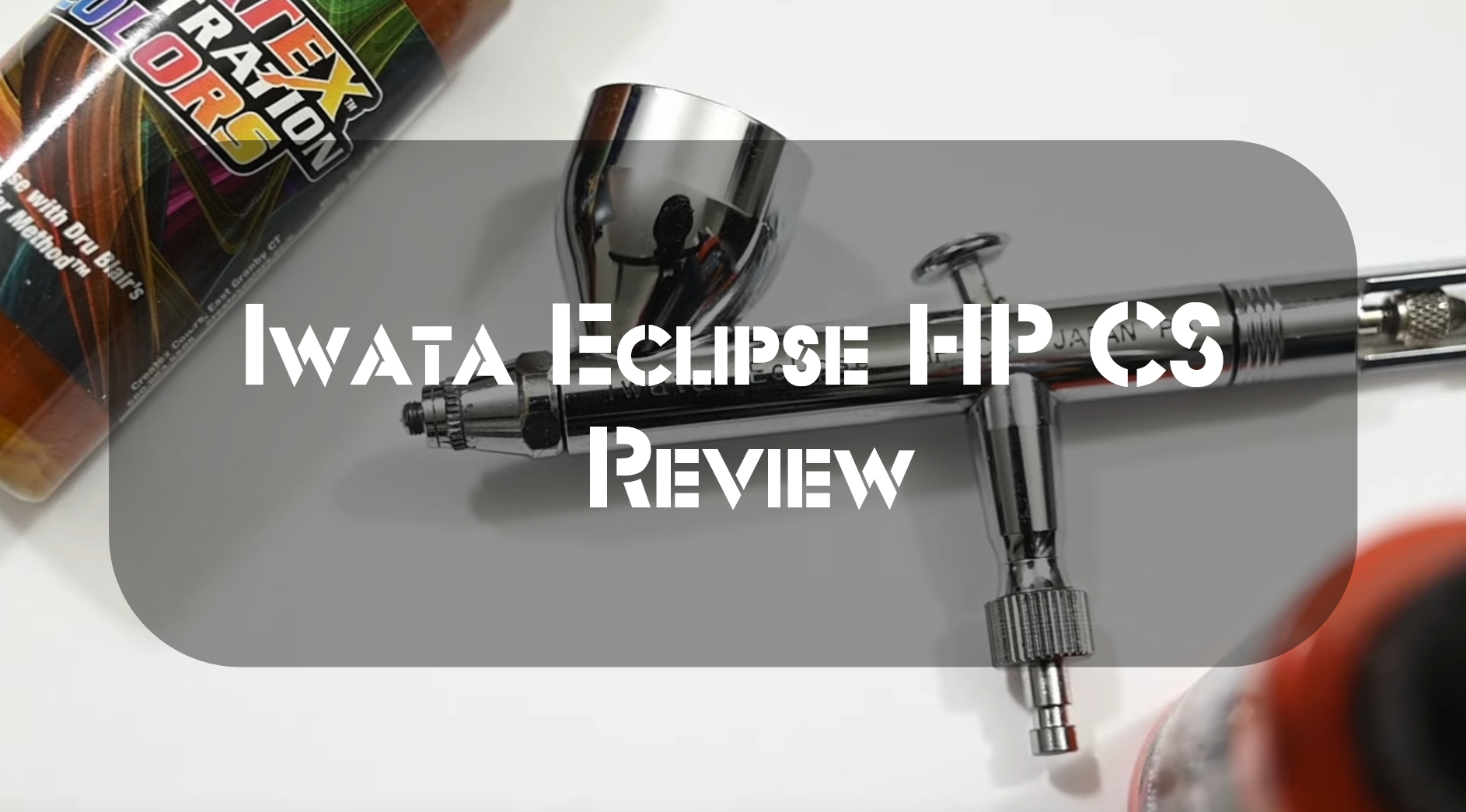
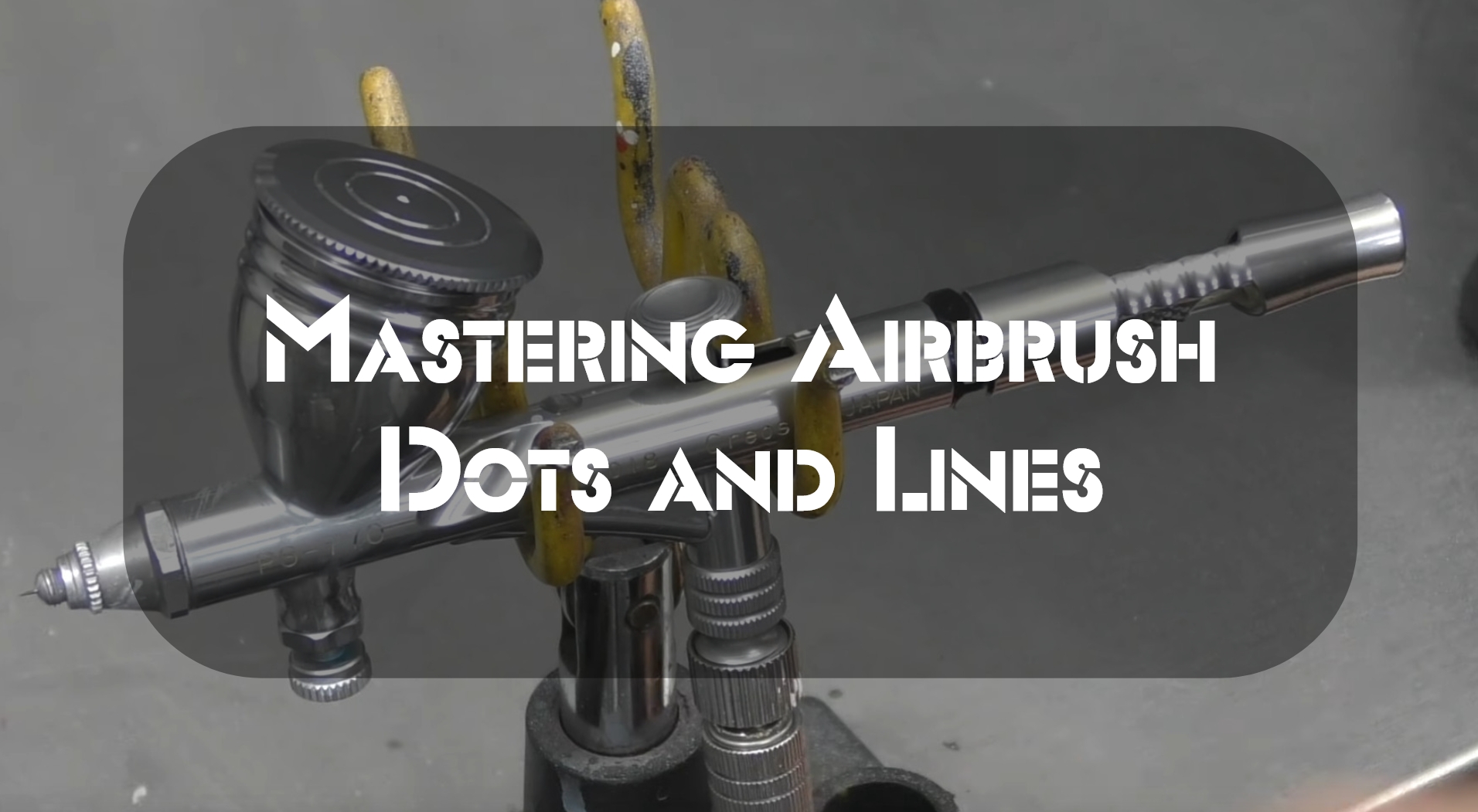
Leave a Reply